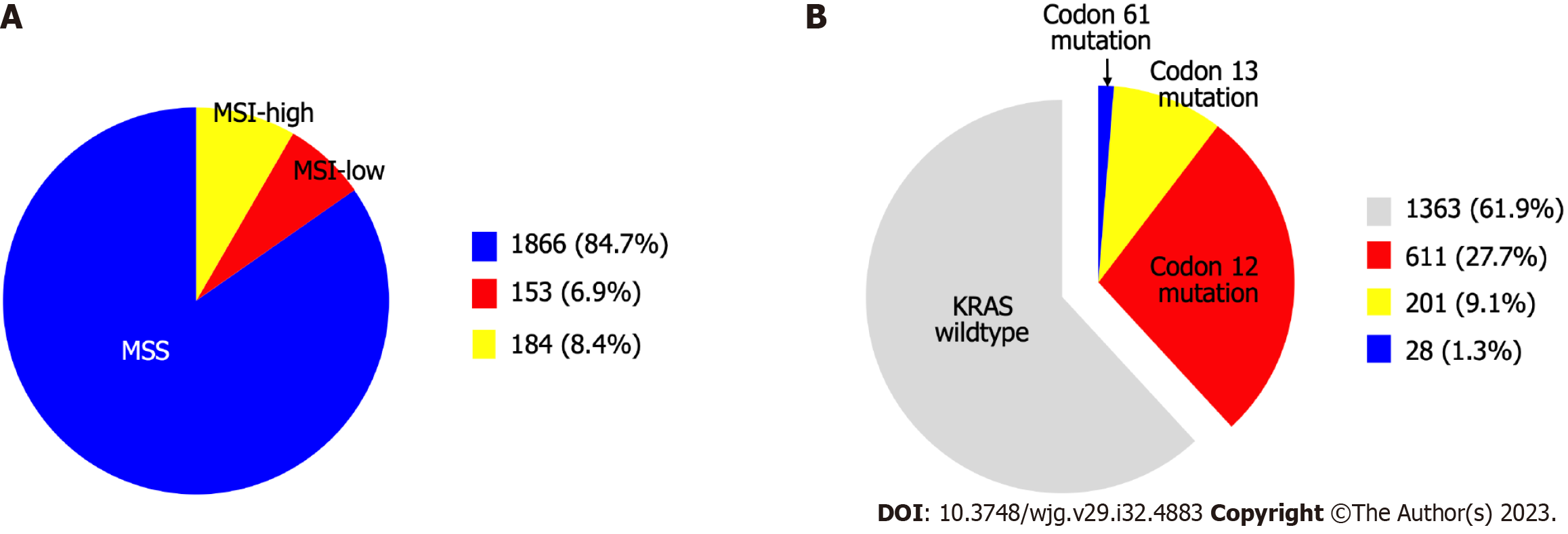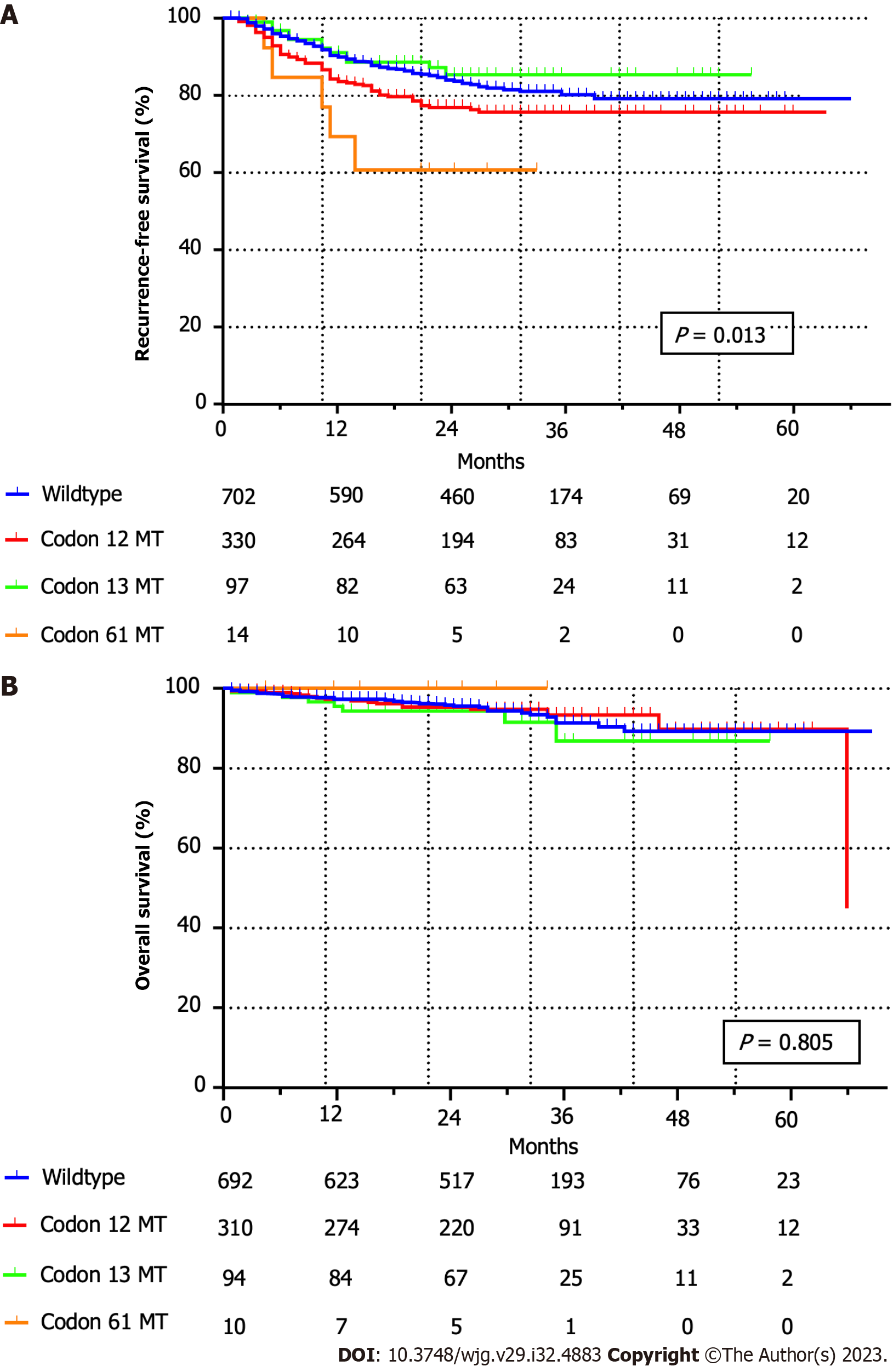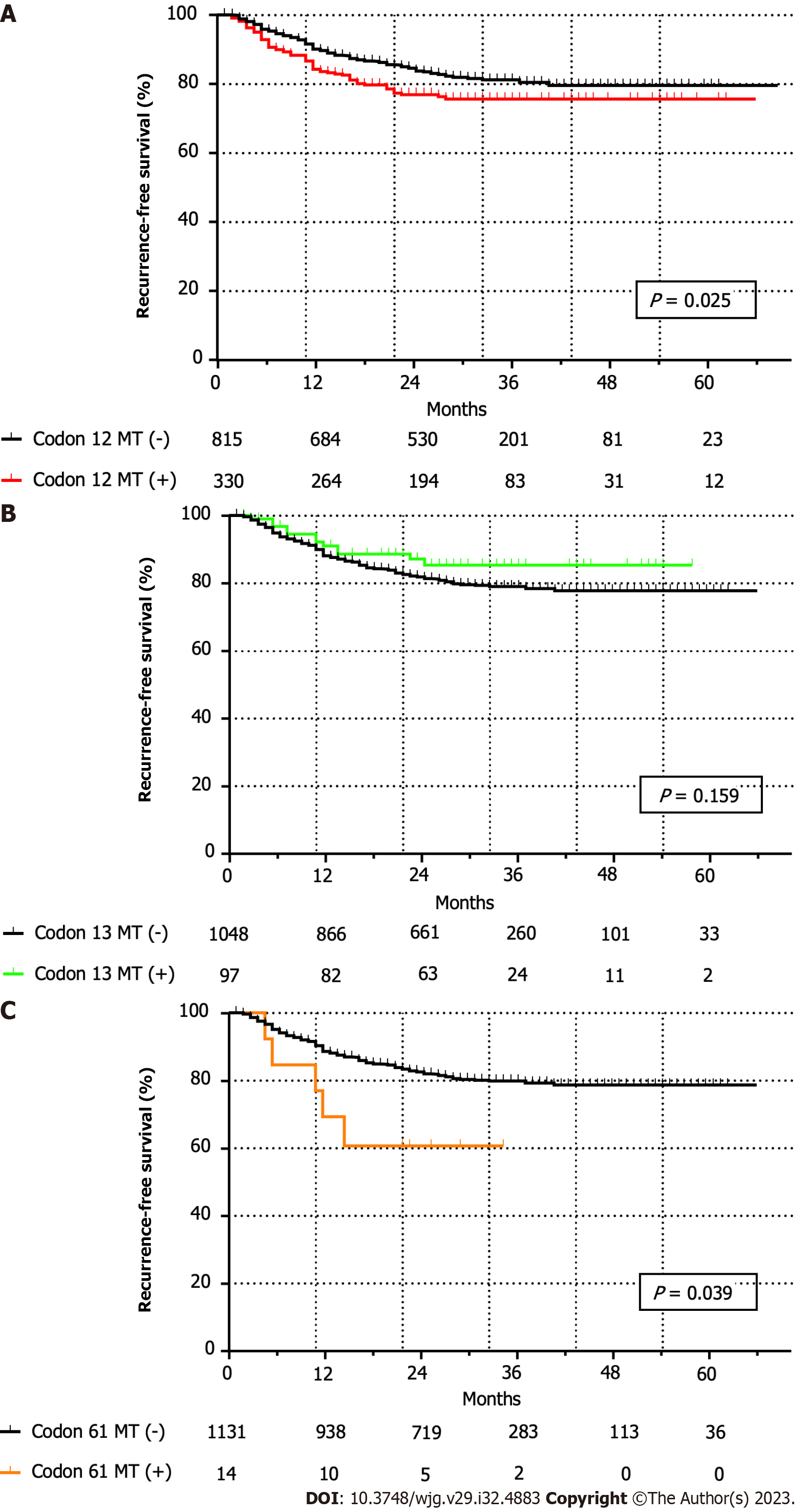Copyright
©The Author(s) 2023.
World J Gastroenterol. Aug 28, 2023; 29(32): 4883-4899
Published online Aug 28, 2023. doi: 10.3748/wjg.v29.i32.4883
Published online Aug 28, 2023. doi: 10.3748/wjg.v29.i32.4883
Figure 1 Incidence of microsatellite instability status and Kirsten rat sarcoma viral oncogene homolog mutations.
A: Microsatellite instability status; B: Mutations of the Kirsten rat sarcoma viral oncogene homolog (KRAS) gene in relation to baseline characteristics. KRAS: Kirsten rat sarcoma viral oncogene homolog; MSS: Microsatellite stable; MSI: Microsatellite instability.
Figure 2 Comparative survival analysis between colorectal cancer samples with wild-type and Kirsten rat sarcoma viral oncogene homolog mutation.
Blue lines indicate wild-type Kirsten rat sarcoma viral oncogene homolog (KRAS). Other lines represent codon-specific KRAS mutations of codon 12 (red), 13 (green), and 61 (orange). A: Recurrence-free survival; B: Overall survival rates were compared using a log-rank test. WT: Wild-type; MT: Mutation.
Figure 3 Survival analysis of each codon-specific Kirsten rat sarcoma viral oncogene homolog mutation in colorectal cancer.
Colored lines indicate codon-specific Kirsten rat sarcoma viral oncogene homolog (KRAS) mutations. A: The red line indicates the recurrence-free survival (RFS) of patients with KRAS codon 12 mutations; B: The green line indicates the RFS of patients with KRAS codon 13 mutations; C: The orange line indicates the RFS of patients with KRAS codon 61 mutations. MT: Mutation.
- Citation: Ahn HM, Kim DW, Oh HJ, Kim HK, Lee HS, Lee TG, Shin HR, Yang IJ, Lee J, Suh JW, Oh HK, Kang SB. Different oncological features of colorectal cancer codon-specific KRAS mutations: Not codon 13 but codon 12 have prognostic value. World J Gastroenterol 2023; 29(32): 4883-4899
- URL: https://www.wjgnet.com/1007-9327/full/v29/i32/4883.htm
- DOI: https://dx.doi.org/10.3748/wjg.v29.i32.4883











